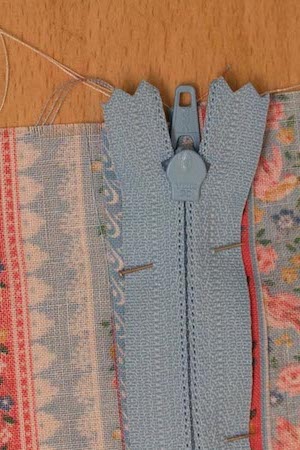- Home
- Sewing Jobs
Real Sewing Jobs You Can Do at Home —
No Fancy Studio Needed
A neighbour drops a too-long pair of jeans on your table and asks if you can “just fix the hem” before the weekend.
If you can thread a needle or tame a sewing machine, you’re already closer to paid sewing jobs than you might think.
From quick repairs and alterations to handmade toys, embroidery designs and even teaching classes, there are plenty of ways to turn your existing skills into steady income from home.
In this guide, I’ll show you where to start, what people actually pay for, and how to grow from doing the odd favour into a small-but-mighty home business.
Start Here: Make Money with Simple Repairs
(The quickest way to earn using the skills you already have)
You don’t need to be a master tailor to start earning. Most people don’t know how to fix a hem or adjust a curtain. If you do, that’s where an opportunity lies.
With a trusty sewing machine (or even just a needle and thimble), you can start a simple home-based business doing the everyday repairs that others can’t — or won’t — do themselves.
 Can you sew in a zipper?
Can you sew in a zipper?High-Demand Repair Services
- Hemming Pants and Jeans: A quick win. Price from £10 per pair and you’ll soon get the knack.
- Fixing Zippers: Jackets, bags, dresses... zips are fiddly, but you can do it quickly with the right tools.
- Adjusting Curtains: Perfect for ready-made curtains that don’t quite fit.
- Taking in or Letting Out Clothes: Especially popular post-Christmas or after wardrobe reshuffles.
How to Get Started
Start small and local. Offer your services to neighbours, friends, or your local Facebook group. Word spreads faster than a box of dropped pins.
Make a flyer (yes, the old-fashioned kind) for your community board, post office, or even the back of your car window.
List yourself on sites like Thumbtack or Nextdoor, where folks look for local help.
Set Your Prices (and Stick to Them)
Do a bit of quiet research: what are local dry cleaners or tailors charging? Undercut slightly if you’re new, but don’t undervalue your time. Here’s a rough starting guide:
- Hemming trousers: £10–15
- Zipper replacement: £15–25 (more for coats!)
- Curtain alterations: £20–40 depending on size
And remember: you can always raise your prices as your reputation grows.
Bonus Tip: Offer Pickup and Delivery
A little convenience goes a long way. If you can collect items or drop them off — or partner with a local dry cleaner — you’ll stand out in all the right ways.
Sell What You Sew: Toys, Dresses and More
 A pair of furry puppies I made, many moons ago!
A pair of furry puppies I made, many moons ago!(Turn your creative spark into a proper little business)
If your talent leans more toward making than mending, you’re in good company. From one-of-a-kind wedding dresses to charming rag dolls, there’s always a market for beautifully handmade items.
I used to travel far and wide to craft fairs, car packed to the brim with puppets and soft toys. These days, platforms like Etsy let you sell your creations without leaving home (or risking fluff-induced asthma — more on that in a moment).
Handmade Products People Will Pay For
Wedding dresses and bridesmaid gowns: If you can stitch the kind of gown that makes someone gasp, you’re in business. Prices often start in the hundreds (or thousands).
Handmade Children's Toys: Think rag dolls, soft animals, or even glove puppets. Parents love thoughtful, unique toys — especially when they’re safe, soft, and made with love.
Costumes for Cosplay or Performance: Theatre groups, dance schools, and cosplay fans often need custom costumes, especially around Halloween or performance season.
My craft fair days
I sold soft toys and puppets for years, on rickety decorators' paste tables set up in a field, or solid hardwood desks in the library of a stately home both with a pure white sheet laid on top as a makeshift tablecloth.
Some days I'd bring most of my items home with me, whereas at others I almost wished I had a bodyguard to keep the cash box, heavy and jangling, safe on the journey.
Sadly, I had to retire up my soft toy stall after the fur fluff aggravated my asthma. If you’re in the same boat, you might stick to cotton-based projects like rag dolls or patchwork creatures instead. Just as charming, and a bit easier on the lungs.
Where to Sell Handmade Goods
- Etsy – Ideal for both one-offs and repeatable items.
- Facebook Marketplace – Great for reaching local buyers.
- Local Craft Fairs – Still a lovely way to meet your market face-to-face.
- Instagram or Pinterest – Perfect for showing off your makes and linking back to your shop.
Start Small, Then Grow
Begin with 2–3 items you enjoy making. Take lovely, natural-light photos. Add a short, heartfelt description (people love a bit of story).
Once you’ve had a few sales, ask buyers for reviews — they go a long way toward building trust.
Offer a “made to order” version of one item (like a soft rabbit in any colour). This keeps inventory low but shows you’re open for business.
Embroidery: Stitch for Others or Design Your Own
(Because a love of thread can lead to more than just a drawer full of samplers)
Option 1: Stitch for Designers
Many embroidery and cross-stitch designers need skilled stitchers to “test stitch” their patterns before they’re published. Your job?
- Follow the pattern
- Spot any confusing instructions
- Confirm if the amount of thread provided is enough
- And send back a beautiful stitched piece they can photograph
How to Get Started
- Follow your favourite designers on Instagram or Pinterest
- Comment on their posts, share your stitching — start a little conversation
- Offer to test a pattern for free at first to build trust
- Or ask at your local needlework shop (if you still have one) — many need stitched samples for display
Option 2: Design & Sell Your Own Patterns
If you enjoy doodling stitch layouts or thinking, “This flower would make a lovely blackwork piece,” you might just be a designer in the making.
You don’t need to be an artist. You just need an idea, some graph paper (or software), and a stitcher’s sense of what looks good when finished.
This is how I started, check out my About Me page for the full story.
Where to Sell Your Embroidery Designs
Etsy – for digital pattern downloads
Your own website – with blog posts or tutorials to attract traffic
YouTube or Skillshare – pair your patterns with video tutorials
Social media – build a following by sharing in-progress shots and freebies
Getting Started Tip
Start with beginner-friendly cross-stitch or blackwork patterns. Offer a free sampler to build your audience, and gently introduce paid designs once you have a few fans stitched into place.
My ebook Stitch Your Own Business walks you through every step of designing, pricing, and selling your own embroidery patterns — including the bits I wish I’d known when I started.
Teach What You Know: Local and Online Options
(Pass on your skills — and maybe make a bit of a name for yourself too)
Not all sewing jobs involve a needle and thread in hand the whole time.
If you’ve been stitching for years (or even just long enough to have made your fair share of wobbly seams), teaching others might be your next best opportunity.
Needlecrafts like embroidery, mending, and basic sewing are making a big comeback.
Folks want to learn how to sew their own clothes, upcycle curtains, or finally conquer that buttonhole fear. And lucky for them — you’re just the person to help.
And yes, people will pay for it.
 Students taking part in one of my classes at my local needlework shop
Students taking part in one of my classes at my local needlework shopLocal Classes: From Village Halls to Craft Shops
Offer beginner classes in a church hall, at your local needlework shop, or even around your own kitchen table with a pot of tea and a packet of digestives.
You don’t need to be flashy. Just friendly, clear, and encouraging.
Back in the day, I taught at some of the big needlework shows in London, Birmingham and Harrogate. After my demo, I’d often end up with a little stampede of eager kit-buyers following me back to my booth. Like the pied piper — but with thread.
Practical Tips for In-Person Classes
- Bring samples (finished ones!) — people like to see the end goal
- Prepare a simple project that can be finished in a session or two
- Always have a follow-on lesson or kit ready — enthusiasm is catching
- Team up with a local shop or dry cleaner for space and materials
Teach Online: Reach Learners Around the World
Online teaching is booming, and it’s easier than ever to get started.
Record a class from your dining room table or offer live Zoom workshops. Some platforms even do the marketing for you.
Where to teach online:
- Skillshare
- Udemy
- Teachable
- or your own website
- YouTube (start free, then link to paid classes or kits)
Pro Tip: Create Beginner Kits
Sell a matching sewing kit with your class — scissors, thread, fabric, the works. Students love having everything in one parcel, and it adds a lovely extra income stream for you.
What About Craft Shows?
National events often look for experienced stitchers to run workshops.
If you enjoy a crowd and don’t mind hauling a few kits, it can be a brilliant way to build your reputation and meet like-minded makers.
If you do this, take a helper — I learned the hard way that you can’t teach and run your stall without sprouting an extra pair of arms.
You’re Ready to Start Stitching for Income
Whether you dream of crafting custom wedding gowns or just want to make a bit of extra pocket money mending jeans, there’s a place for your skills.
You don’t need a fancy studio or a business degree — just a needle, a bit of thread, and the willingness to start.
Pick one idea from this page and give it a go:
- Offer to hem a neighbour’s trousers.
- List a soft toy on Etsy (or show it off on Facebook).
- Stitch a sample embroidery pattern and tag the designer.
- Plan a beginner class with tea and biscuits after.
Each small step is a stitch toward something bigger.
If you wait until you feel ready, you'll be waiting forever. Stitch crooked if you must — just start.
Need a Little Extra Help?
If you'd like a more detailed roadmap, my ebook Stitch Your Own Business walks you through every step of launching a home-based stitching business — from pricing to promotion to pattern design.
Stay connected between projects
If you’d like occasional updates from my embroidery room, including new patterns, gentle tips, and little things I think you might enjoy, you’re warmly invited to join the Stitchin’ Times newsletter.
No pressure. Just a friendly note now and then to keep you inspired.